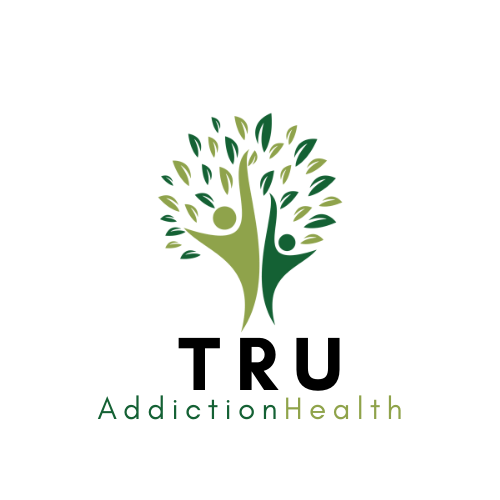UNC’s Sasha Deutsch-Link, MD, a fellow in the Department of Gastroenterology and Hepatology, is lead author of a research study showing that alcohol- associated liver disease (ALD) mortality increased from 2017-2020 and sped up during the COVID-19 pandemic in almost all age. Andrew Moon, MD, MILES PER HOUR, is senior author.

A research study released in the Clinical Gastroenterology and Hepatology journal, and led by UNC School of Medicine scientists, discovered that alcohol- associated liver disease (ALD) mortality sped up during the COVID-19 Pandemic.
” We’ve in fact seen for rather a long time now that alcohol- associated liver disease mortality has actually been increasing in the United States,” stated Sasha Deutsch-link, MD, research study lead author and a fellow in the UNC Department of Gastroenterology and Hepatology in the UNC Department of Medicine. “This pattern returns to 2006, and we have actually seen a consistent increase overtime. In our paper we truly desired to upgrade these patterns to see if we were seeing this ongoing increase.”
The research study’s senior author is Andrew Moon, MD, MILES PER HOUR, and co-authors are A. Sidney Barritt IV, MD, MSCR, and Anne Peery, MD, MSCR, all from the UNC Department of Gastroenterology and Hepatology.
Formerly, The American Journal of Gastroenterology reported that ALD mortality increased in between 2006 and 2017. Considering that 2017, alcohol usage has actually continued to increase. To upgrade patterns of ALD-related mortality in the US and to measure the rate of modification, scientists drawn out information from January 1, 2017 to December 31, 2020 utilizing the Hidden Cause of Death public-use information file from the Centers for Disease Control and Prevention (CDC) National Center for Health Data. Scientist analyzed age-adjusted mortality rates in ages 25 years and older on all US citizens, and it was stratified by sex, age and race/ethnicity to upgrade formerly released information.
The UNC group discovered that from 2017 to 2020 there was an ongoing increase in ALD-related mortality. The typical yearly percent modification in deaths increased about 9% each year for guys and about 12% each year for females. Scientists likewise saw how the rate of modification in ALD deaths surged substantially in early 2020 for both guys and females. The yearly percent modification in increase from 2019 to 2020 in guys in general was 21% and in females it was 27%. In females ages 25-34, it was a 38% increase and in ages 35-44, there was 47% increase. For guys, ages 25-34, scientists saw a 51% increase and for guys, ages 35-44, it was a 45% increase.
From disturbances in work and school to shifts of alcohol usage in bars and dining establishments to at- house use, alcohol use continued to climb strongly, specifically during the pandemic. From 2017 to 2020 and 2019 to 2020, the group with the greatest relative increase in ALD was more youthful grownups, ages 25-44. The market with the greatest total rates of ALD mortality is in the older age, ages 45-64.

” We understood that liver disease deaths from alcohol were on the increase prior to COVID-19 and this research study verified our suspicions that these worrying increases in ALD deaths were irritated by the COVID-19 pandemic,” stated Moon.
Patterns in mortality rates for ALD from 2017 to 2020 in age, race and ethnic culture reveals that yearly boosts in death were seen in every age other than those over age 85. The greatest age-adjusted rates were discovered amongst American Indians/Alaska Native, Hispanic, and White people. Asian guys had the greatest relative increase in ALD-related mortality, likely due to a low standard ALD mortality. The analysis likewise suggests that some boosts in ALD mortality, both in rate and outright count, were seen prior to the pandemic. One underlying description for these patterns is the increase in alcohol usage and alcohol- associated problems prior to and during the pandemic.
” Previous research study has actually revealed that increasing joblessness and financial insecurity can intensify addiction at the community level,” stated Deutsch-link. “Increasing in seclusion and solitude during quarantine might have likewise exacerbated alcohol usageand alcohol use disorder In patients with underlying liver disease, increased alcohol usage or getting worse intensity of an alcohol use disorder can lead to increased mortality,” she stated.
Other prospective factors consist of increasing obesity/metabolic syndrome and comorbid non-alcoholic fatty liver disease, which can increase threat for the advancement of ALD. The pandemic might have likewise jeopardized proper healthcare for patients with ALD, specifically those who were uncertain about looking for care in a hospital setting.
” Numerous patients with alcohol use disorder, especially early on in the pandemic, had a more difficult time interesting in alcohol use therapy, especially in group settings like Twelve Step Programs,” stated Moon. “Patients with intense alcohol- associated liver disease were most likely postponing entering into the hospital up until they were extremely ill. This implies that patients were most likely coming in at a phase when their alcohol- associated liver disease was dangerous and there might be less to deal from a medical viewpoint.”
The analysis demonstrates how ALD mortality is increasing amongst males and women in nearly every age and racial/ethnic market in the US, an unpleasant pattern that might trigger an on- going spike in ALD mortality.
” I would not be shocked if numerous of the deaths we’re seeing in the last couple of years are from alcohol- associated liver disease, and perhaps 10 to 15 years from now, we’ll likewise see an increase in alcohol- associated cirrhosis of the liver and liver cancer amongst these patients,” Moon stated.
The urgent requirement to reduce the increasing ALD disease concern and mortality calls for an across the country effort to lower national alcohol usage, enhance alcohol use disorder screening, and enhance early treatment.
” We require to increase gain access to to evidence-based care for alcohol use disorder,” Deutsch-link stated. “There’s a lack of addiction treatment providers in our nation. There are policies at the federal government level that might possibly effect alcohol usage. I believe we can take some lessons gained from the opioid crisis where this ended up being a national crisis and the reaction included policy modifications and financing for programs to truly deal with these concerns. We require to gain from those interventions to see what we can do now to address alcohol use disorders particularly.”
Dr. Deutsch-link’s research study was supported in part by a grant with the National Institutes of Health– T32 DK007634. Dr. Moon was supported by an Advanced/Transplant Hepatology Award (AASLD Structure).
Media contact: Brittany Phillips, UNC School of Medicine, 919-270-6212
